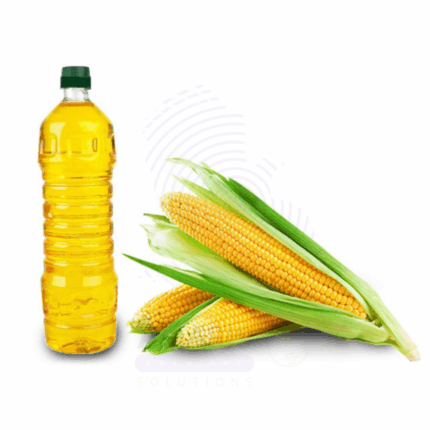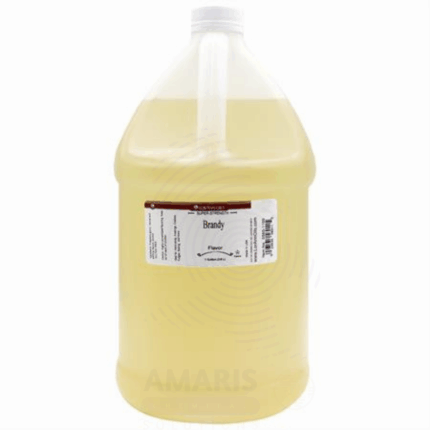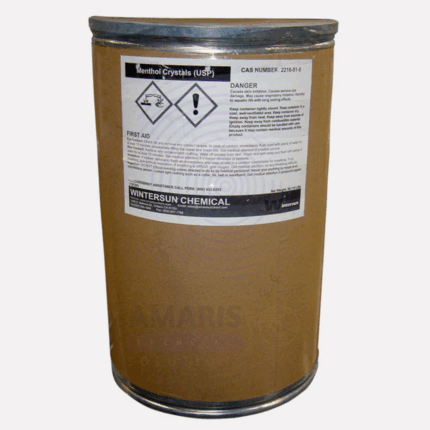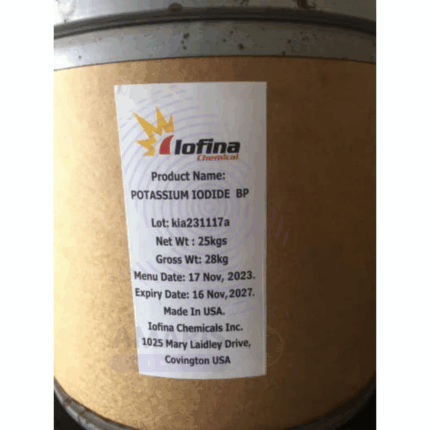Sucralose
Sucralose is a high-intensity, zero-calorie artificial sweetener derived from sucrose through selective chlorination. It is approximately 600 times sweeter than sugar, making it an effective sugar substitute in a wide range of food and beverage applications. Sucralose is stable under heat and across a broad pH range, suitable for cooking, baking, and long shelf-life products. It delivers sweetness without calories or glycemic impact, favored in health-conscious and diabetic-friendly formulations.
Primary Uses
Food & Beverage Industry
Tabletop Sweeteners: Used in granular or powder form as a sugar substitute in beverages, coffee, and tea.
Baked Goods: Stable under baking conditions, used in cakes, cookies, and pastries.
Dairy Products: Added to yogurts, ice creams, and flavored milks for sweetness without added calories.
Beverages: Used in soft drinks, diet sodas, juices, and energy drinks for low-calorie sweetness.
Confectionery: Employed in chewing gums, candies, and chocolates.
Pharmaceuticals & Nutraceuticals
Oral Care Products: Added to toothpaste and mouthwashes for sweetening without promoting tooth decay.
Medications: Used to mask bitterness in syrups, chewable tablets, and oral solutions.
Dietary Supplements: Included in formulations targeting weight management and diabetic consumers.
Secondary Uses
Cosmetics & Personal Care
Flavor Enhancer: Added to lip balms, lipsticks, and flavored skincare products.
Animal Feed
Palatability Enhancer: Occasionally used to improve taste in specialized feed formulations.
Industrial Applications
Chemical Intermediate: Used in research and development for sweetener-related chemical synthesis.
Basic Identification Attributes
Chemical Name (IUPAC): 1,6-Dichloro-1,6-dideoxy-β-D-fructofuranosyl-4-chloro-4-deoxy-α-D-galactopyranoside
Common/Trade Name: Sucralose
CAS Number: 56038-13-2
HS Code: 2932.90.90
Synonyms: Splenda (brand), Trichlorogalactosucrose
Physical & Chemical Properties
Physical State: White crystalline powder
Color & Odor: White; odorless
Melting Point: 125–130 °C (decomposes)
Solubility: Highly soluble in water; insoluble in ethanol and other organic solvents
Density: Approx. 1.4 g/cm³
Stability: Stable under heat, acid, and alkaline conditions
Safety & Hazard Attributes
GHS Classification: Not classified as hazardous
Toxicity: Low toxicity; Generally Recognized as Safe (GRAS) by FDA
Exposure Limits: No established occupational exposure limits
Storage & Handling Attributes
Storage Conditions: Store in a cool, dry place, away from moisture and direct sunlight
Container Type: Sealed bags, drums, or containers with moisture barriers
Shelf Life: 24–36 months when stored properly
Handling Precautions: Avoid dust formation; use dust extraction if necessary
Regulatory & Compliance Attributes
Approved by FDA, EFSA, JECFA, and other international food safety authorities.
Complies with Codex Alimentarius standards for food additives.
Meets ISO 9001 and GMP standards for quality and safety.
Listed under TSCA and complies with REACH regulations.
Environmental & Health Impact
Biodegradability: Poorly biodegradable but considered environmentally safe at typical use levels.
Ecotoxicity: Low toxicity to aquatic organisms at environmental concentrations.
Bioaccumulation: Not significant.
PPE Required: Gloves and dust mask recommended during handling
Handling Guidelines: Use adequate ventilation to avoid dust inhalation
Storage Measures: Keep containers tightly sealed and dry
First Aid Measures
Inhalation: Remove to fresh air; seek medical attention if irritation occurs
Skin Contact: Wash with soap and water
Eye Contact: Flush with water for 15 minutes; seek medical help if irritation persists
Ingestion: Rinse mouth; seek medical advice if large amounts ingested
Firefighting Measures
Fire Hazards: Combustible organic powder
Extinguishing Media: Use water spray, foam, dry chemical, or CO₂ extinguishers
Hazardous Combustion Products: Carbon oxides and hydrogen chloride gas


 Preservatives(food)
Preservatives(food) Flavor Enhancers
Flavor Enhancers Acidulants
Acidulants Sweeteners
Sweeteners Antioxidants
Antioxidants Colorants(food)
Colorants(food) Nutraceutical Ingredients (food)
Nutraceutical Ingredients (food) Nutrient Supplements
Nutrient Supplements Emulsifiers
Emulsifiers
 Collectors
Collectors Dust Suppressants
Dust Suppressants Explosives and Blasting Agents
Explosives and Blasting Agents Flocculants and Coagulants
Flocculants and Coagulants Frothers
Frothers Leaching Agents
Leaching Agents pH Modifiers
pH Modifiers Precious Metal Extraction Agents
Precious Metal Extraction Agents
 Antioxidants(plastic)
Antioxidants(plastic) Colorants (Pigments, Dyes)
Colorants (Pigments, Dyes) Fillers and Reinforcements
Fillers and Reinforcements Flame Retardants
Flame Retardants Monomers
Monomers Plasticizers
Plasticizers Polymerization Initiators
Polymerization Initiators Stabilizers (UV, Heat)
Stabilizers (UV, Heat)
 Antifoaming Agents
Antifoaming Agents Chelating Agents
Chelating Agents Coagulants and Flocculants
Coagulants and Flocculants Corrosion Inhibitors
Corrosion Inhibitors Disinfectants and Biocides
Disinfectants and Biocides Oxidizing Agents
Oxidizing Agents pH Adjusters
pH Adjusters Scale Inhibitors( water)
Scale Inhibitors( water)
 Antioxidants(cosmetic)
Antioxidants(cosmetic) Emollients
Emollients Fragrances and Essential Oils
Fragrances and Essential Oils Humectants
Humectants Preservatives
Preservatives Surfactants(cosmetic)
Surfactants(cosmetic) Thickeners
Thickeners UV Filters
UV Filters
 Fertilizers
Fertilizers Soil Conditioners
Soil Conditioners Plant Growth Regulators
Plant Growth Regulators Animal Feed Additives
Animal Feed Additives Biostimulants
Biostimulants Pesticides (Herbicides, Insecticides, Fungicides)
Pesticides (Herbicides, Insecticides, Fungicides)
 Active Pharmaceutical Ingredients (APIs)
Active Pharmaceutical Ingredients (APIs) Excipients
Excipients Solvents(pharmaceutical)
Solvents(pharmaceutical) Antibiotics
Antibiotics Antiseptics and Disinfectants
Antiseptics and Disinfectants Vaccine Adjuvants
Vaccine Adjuvants Nutraceutical Ingredients (pharmaceutical)
Nutraceutical Ingredients (pharmaceutical) Analgesics & Antipyretics
Analgesics & Antipyretics
 Analytical Reagents
Analytical Reagents Solvents(lab)
Solvents(lab) Chromatography Chemicals
Chromatography Chemicals Spectroscopy Reagents
Spectroscopy Reagents microbiology-and-cell-culture-reagents
microbiology-and-cell-culture-reagents Molecular Biology Reagents
Molecular Biology Reagents Biochemical Reagents
Biochemical Reagents Inorganic and Organic Standards
Inorganic and Organic Standards Laboratory Safety Chemicals
Laboratory Safety Chemicals Specialty Laboratory Chemicals(Special Laboratory Equipment)
Specialty Laboratory Chemicals(Special Laboratory Equipment)
 Demulsifiers
Demulsifiers Hydraulic Fracturing Fluids
Hydraulic Fracturing Fluids Scale Inhibitors(oil)
Scale Inhibitors(oil) Surfactants(oil)
Surfactants(oil) Drilling Fluids
Drilling Fluids
 Dyes and Pigments
Dyes and Pigments Bleaching Agents
Bleaching Agents Softening Agents
Softening Agents Finishing Agents
Finishing Agents Antistatic Agents
Antistatic Agents
 Admixtures
Admixtures Waterproofing Agents
Waterproofing Agents Sealants and Adhesives
Sealants and Adhesives Curing Compounds
Curing Compounds Concrete Repair Chemicals
Concrete Repair Chemicals Anti-Corrosion Coatings
Anti-Corrosion Coatings
 Surfactants(cleaning)
Surfactants(cleaning) Builders
Builders Enzymes
Enzymes Solvents (Cleaning)
Solvents (Cleaning) Fragrances
Fragrances
 Electronic Chemicals
Electronic Chemicals Catalysts
Catalysts Lubricants
Lubricants Photographic Chemicals
Photographic Chemicals Refrigerants
Refrigerants Automotive chemicals
Automotive chemicals Pyrotechnic Chemicals
Pyrotechnic Chemicals
 Biodegradable Surfactants
Biodegradable Surfactants Bio-based Solvents
Bio-based Solvents Renewable Polymers
Renewable Polymers Carbon Capture Chemicals
Carbon Capture Chemicals Wastewater Treatment Chemicals
Wastewater Treatment Chemicals
 Pigments
Pigments Solvents(paint)
Solvents(paint) Specialty Coatings
Specialty Coatings Binders/Resins
Binders/Resins Additives
Additives Driers
Driers Anti-Corrosion Agents
Anti-Corrosion Agents Functional Coatings
Functional Coatings Application-Specific Coatings
Application-Specific Coatings
 Fresh Herbs
Fresh Herbs Ground Spices
Ground Spices Whole Spices
Whole Spices Spice Blends
Spice Blends Dried Herbs
Dried Herbs
 Leavening Agents
Leavening Agents Dough Conditioners
Dough Conditioners Flour Treatments
Flour Treatments Fat Replacers
Fat Replacers Decoratives
Decoratives Preservatives(baking)
Preservatives(baking)
 Plasticizers & Softeners
Plasticizers & Softeners Reinforcing Agents
Reinforcing Agents Adhesion Promoters
Adhesion Promoters Vulcanizing Agents
Vulcanizing Agents Antidegradants
Antidegradants Blowing Agents
Blowing Agents Fillers & Extenders
Fillers & Extenders Accelerators & Retarders
Accelerators & Retarders























